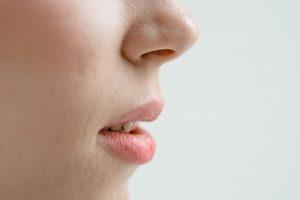The cosmetic procedure known as the “lip flip” is a non-invasive technique used for enhancing the appearance of the lips. It involves the injection of small doses of botulinum toxin (Botox) into specific areas of the upper lip. The primary aim of the lip flip procedure is to elevate and flip the upper lip outward, creating a more prominent and fuller appearance.Some use hyaluronic acid dermal fillers in addition to add fullness.
Botulinum toxin, a neurotoxin produced by the bacterium Clostridium botulinum, is commonly utilized in cosmetic medicine for its muscle-paralyzing properties. When small doses of botulinum toxin are injected into specific facial muscles, it temporarily weakens the muscle’s ability to contract, leading to a reduction in wrinkles and fine lines. In the case of the lip flip, the toxin is administered into the orbicularis oris muscle, which encircles the mouth and is responsible for shaping the lips.
How Does Lip Flip Work?

The mechanism of action of the lip flip procedure is based on the principle of muscle balance. The orbicularis oris muscle is divided into two distinct components, the upper and lower portions, with each component having a distinct function. The upper portion, also known as the levator labii superioris, is responsible for elevating the upper lip, while the lower portion, known as the depressor labii inferioris, is responsible for depressing the lower lip. By temporarily paralyzing the upper portion of the orbicularis oris muscle, the lip flip procedure causes the upper lip to flip outward, creating a more prominent and fuller appearance.
What is the Lip Flip Procedure?
The lip flip procedure is a minimally invasive cosmetic procedure that typically takes less than 15 minutes to perform. The patient is first numbed using a topical anesthetic cream to minimize any discomfort associated with the injections. A very fine needle is then used to inject small doses of botulinum toxin into specific areas of the upper lip. The injections are usually administered in three to five different sites along the upper lip, with each site being spaced approximately 1 cm apart.
How Long Does Lip Flip Last?
The effects of the lip flip procedure are typically visible within three to five days and can last for up to three to six months. During this time, the patient will experience a noticeable improvement in the appearance of their lips, with the upper lip appearing fuller and more prominent.
What are the Risks of Lip Flip?
The lip flip procedure, despite being considered a safe and effective cosmetic procedure, is not without potential risks and complications. These risks and complications can vary in severity, ranging from minor and temporary to severe and permanent. It is important for individuals considering the procedure to be fully informed of the potential risks and complications before undergoing the procedure.
One of the most common risks associated with the lip flip procedure is the occurrence of adverse reactions to the botulinum toxin used in the procedure. These adverse reactions may include symptoms such as redness, swelling, bruising, itching, and tenderness at the injection site, which typically resolve within a few days. In rare cases, patients may experience more severe adverse reactions, such as an allergic reaction or anaphylaxis, which may require immediate medical attention.
Another risk associated with the lip flip procedure is the potential for asymmetry or unevenness in the appearance of the lips. This may occur if the botulinum toxin is not administered in equal doses to both sides of the upper lip, leading to asymmetry in the appearance of the lips. In some cases, this asymmetry may require additional injections or touch-up procedures to correct.
In addition, there is a risk of over-correction or under-correction with the lip flip procedure. Over-correction may result in an unnatural and overly prominent appearance of the upper lip, while under-correction may result in a lack of improvement in the appearance of the lips.
Finally, there is a risk of the development of resistance to Botox used in the lip flip procedure, leading to a reduced efficacy of the procedure over time. This risk may be mitigated through regular follow-up injections to maintain the desired results.
The lip flip procedure is relatively safe and effective cosmetic procedure with a low risk of adverse effects. Common side effects associated with the procedure include mild swelling, redness, and bruising at the injection site, which typically resolve within a few days. Rarely, patients may experience a drooping of the upper lip, but this is typically temporary and resolves within a few days.